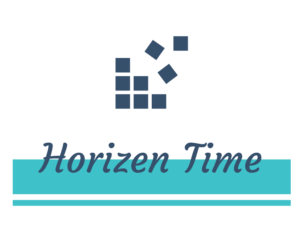The Future of Blockchain Infrastructure
If the internet had remained at the dial-up stage, innovations like Netflix, real-time gaming, and cloud computing would never have come to fruition. The advancement of internet infrastructure has been crucial for widespread adoption. In a similar fashion, Layer-3 solutions are seen as a necessary evolution in blockchain infrastructure, aimed at reducing friction, lowering costs, and preparing blockchain technology for mainstream acceptance. However, there are critics who argue that these solutions may introduce unnecessary complications.
Horizen’s Strategic Transition
At Horizen Labs, the discussion surrounding Layer-3 solutions is particularly relevant following the recent decision by the Horizen DAO to integrate into the Base ecosystem. This significant governance vote signifies the start of Horizen’s shift to Base, which is Coinbase’s Layer 2 network, tailored for applications focused on privacy. We firmly believe in the potential of Layer-3 solutions, as they embody the next step in enhancing blockchain scalability.
The Need for Speed and Affordability
For cryptocurrency to attract a billion users, transaction speeds must be rapid, costs must be low, and the user experience must be seamless. Layer-3 solutions are not merely theoretical concepts; they offer practical solutions to the issue that even Layer-2 solutions may not be affordable enough for widespread acceptance. Layer-3s also specialize in features that are currently unattainable on Layer-1 and Layer-2 solutions, such as advanced zero-knowledge (ZK) capabilities.
A Hierarchical Approach to Costs
Layer-3 solutions tackle a fundamental issue: if Ethereum (Layer-1) is costly, Layer-2 solutions help by managing transactions off-chain, only recording final state proofs on Layer-1. Layer-3s enhance this model by settling transactions on Layer-2 solutions instead of directly on Ethereum, thereby creating a structured hierarchy that minimizes expenses at each layer.
Emergence of Layer-3 Solutions
The development of Layer-3 solutions arose as blockchain designers sought greater operational efficiencies. StarkWare first introduced the concept in late 2021, coining the term “fractal scaling.” Vitalik Buterin later examined Layer-3 designs in 2022, proposing specialized functions beyond basic scaling. By 2023, leading Ethereum scaling teams began to implement Layer-3 frameworks, with Arbitrum launching Orbit for Layer-3 “Orbit chains” and Matter Labs unveiling ZK Stack for creating zk-rollups as either Layer-2s or Layer-3s. These advancements have transitioned Layer-3s from mere theory to tangible applications.
Criticism of Layer-3 Solutions
Opponents of Layer-3 solutions present several arguments: many believe that Layer-2 solutions have not yet reached their full potential, making the development of Layer-3 solutions premature. Some contend that Layer-3s introduce unnecessary complexity. However, remarkable technology often makes complexity invisible to its users, much like the internet did. Others argue that Layer-3s may be redundant, as their objectives could be met by optimizing Layer-2 solutions.
The Importance of Cost Abstraction
A significant realization is that even Layer-2 solutions, designed for quicker and cheaper transactions, may not be sufficient. In many instances, a Layer-3 can further reduce costs, ensuring nearly negligible gas fees. This cost abstraction is essential for blockchain adoption, as it allows transactions to be almost free for users, a capability that Layer-3 solutions can provide.
Enhancing User Experience and Liquidity
This advancement brings us closer to a future where blockchain transactions are seamless. Such a scenario is advantageous for attracting new users, improving liquidity, and encouraging the development of new decentralized applications (dApps) on-chain. When users can conduct transactions without the burden of gas fees, adoption accelerates. Additionally, developers can create applications that would not be economically feasible on networks with higher fees, leading to increased liquidity unimpeded by transaction costs. The overall ecosystem stands to gain immensely from this progress.
Addressing Ecosystem Isolation
Layer-3 solutions also emerge as a response to concerns about ecosystem isolation. Standalone Layer-1 blockchains face numerous hurdles: they must secure their own networks, attract users from the ground up, and create a completely new infrastructure. Many so-called “Ethereum killers,” such as Cardano, Fantom, or Tezos, have realized how challenging this path can be. Layer-3 solutions present an alternative route, allowing chains to stay linked to established ecosystems while offering tailored customization options, which is where their true potential lies.
Customization and Interoperability
Application-specific chains can optimize their functionalities for unique use cases, whether related to zero-knowledge proofs, gaming, decentralized finance (DeFi), social networks, or enterprise solutions. These chains can implement customized virtual machines, consensus algorithms, or privacy features specifically designed for their objectives, all while maintaining connections to the wider ecosystem to leverage its liquidity and security. This combination of customization and connectivity enables these specialized applications to excel, ultimately enhancing the experience for end users.
Streamlining Complexity in Web3
While some may argue that Layer-3 solutions complicate the web3 landscape, they might actually hold the key to simplifying it. If implemented effectively, the complexity can remain hidden from the end users. Modern decentralized applications can mask the underlying layers through innovative wallet designs and user-friendly interfaces. Users need not grasp the intricacies of the layer on which they are transacting, just as internet users do not need to understand TCP/IP protocols. Instead, they benefit from faster and more affordable transactions along with improved products.
A Positive Evolution in Blockchain Architecture
This organic evolution in blockchain architecture is a promising development. Layer-3 solutions strike a balance between independence and interoperability, maximize cost-effectiveness, and enhance security. They facilitate specialized optimization while preserving connections to the ecosystem. These features are not merely optional; they are critical for achieving mainstream blockchain adoption. The internet gained traction not because users comprehended packet-switching or HTTP protocols, but because it functioned seamlessly. Layer-3 solutions bring us closer to a blockchain landscape that operates effortlessly—swiftly, efficiently, and economically. This is how the crypto sector can thrive.

